#yet SO MANY of my classmates relied on google alone for most or all of the program. and like. you could tell.
Text
a deadly education is tone-deaf at best and racist at worse; not the cure to jkr anyone was hoping for
Harry Potter’s massive cultural impact means that we haven’t seen the last of magic schools set in Britain, and we probably won’t for a long while. In some ways, the fantasy genre’s response to Rowling’s work is tiresome. In others, it’s exciting—because a generation of readers and writers have grown up to bring their own perspective to the limits of Rowling’s work and push it beyond the limits of its author. However, if you’re looking for a transgressive magic academy book that interrogates the limited morality, inclusivity, and perspective of Harry Potter, you should put Naomi Novik’s A Deadly Education back on the shelf and keep looking.
A Deadly Education tells the story of Galadriel “El” Higgins, a half-British half-Indian sorcerer attending a magic school where the consequences of any mistake might mean sudden death. El is a loner by nature and circumstance, but walking alone in the halls of Scholomance might mean being attacked and devoured by one of the school’s monsters. This puts El on a crash course with Orion Lake, the shining hero of her year who takes it upon himself to save the lives of his fellow students, including a less-than-grateful El.
The set up honestly sounds pretty good—a prickly protagonist, a heroic rival-slash-love interest, a deadly setting, and the potential for deep lore in magic and world-building. Unfortunately, not only does Novik fail to deliver on any of the premises’ strengths, she also chooses to weigh her narrative down with reductive, tone-deaf, and downright racist details.
El’s particular class of magic relies on language. El speaks English and Marathi, and picks up Sanskrit, Hindi, Latin and Old English in her study of language-based spells. It’s a little uncomfortable that Novik lumps dead and defunct languages like Latin and Old English together with actively spoken ones like Mandarin, Hindi, and Spanish, but that isn’t where Novik’s faux paus end. El approaches languages like computer programs to be downloaded onto her hard drive. Despite languages being the basis of her magic, she has no personal connections to the ones she’s speaking. She views other students and their languages the same way, identifying groups of students as “the Mandarin speakers”, “the Arabic speakers,” etc. Novik seems clueless about the relationships between the languages she’s building her world’s magic around, putting Sanskrit tombs in Baghdad and declaring that the Scholomance has a library aisle containing all of India’s languages. (About 800 individual languages are spoken in India, fyi.)
This clinical approach to diversity extends from language into character. El doesn’t try to make many friends, and honestly it’s not hard to see her classmates don’t try to befriend her, either. She doesn’t describe her classmates as people—she describes them as assets. And while that could be explained away by the premise that half her classmates won’t make it out of school alive, and El needs allies more than friends to survive, it doesn’t make it any better when El refers to others exclusively by the language knowledge they offer her. A character named Ibrahim has no personality or backstory, but he conveniently pops up when El needs someone who knows Arabic. A character named Kaito is thoughtlessly grouped in with the Mandarin speakers. An Argentine character exclaims in Spanish when she’s excited or relieved. There’s an uncomfortable distinction between the languages that get written out in the text—Spanish, French—and the ones that get narrated away—a character exclaims in Mandarin.
Novik goes out of her way to let us know that the population of Scholomance is diverse. There’s a group of South and West African students (only one of whom is named, and none of whom are important). There’s a “civilized” enclave of magicians in Toronto who value family and human life more than other groups. One character might graduate and go to Bangkok, but he’s looking to secure himself a place in Shanghai instead. Naomi Novik really knows the names of cities on at least four continents, and she’s not about to let you forget it!
But aside from names, languages, and cities, Novik has given no thought to what diversity means, or who these characters are if they come from diverse backgrounds. El calls on “Mandarin-speaker,” Yi Liu, exclusively by the name Liu. Is Liu meant to be this character’s first name? Or her surname? El doesn’t call anyone else by surname, but Liu is a Chinese surname, one of the most common in the world. El’s father is a Marathi-speaker from Mumbai, but El has no personal connection to Indian culture. Her father’s family prophesied that El would be a destroyer, and other than that rejection El has nothing to say about India or half of her culture. She refers to her Indian relatives in clinical English descriptors (my father’s mother, my great-grandmother, my uncles), even though she is purportedly fluent in Marathi and should know words like Panaji, Aaji and Kaka. El says that her Indian family is from an old Hindu enclave, and yet they have djinn as servants. (Djinn aren’t a typical part of Hindu cosmology, though they are a significant part of Islamic texts.)
Making El biracial seems like an afterthought, not something that affects her character in any way. It just creates some truly unfortunate optics, like when El goes on a three-paragraph description of how unnecessary she finds showers and how dirty she is at any given time. El’s father died making sure her pregnant mother (and therefore, El herself) would live, and yet El barely thinks about him. His name is mentioned once in the entire book. El complains that (presumably white) British people “assume she speaks Hindi” or call her the color of weak tea. But her Indian heritage is a veneer placed on top of a character who is otherwise just a default white protagonist.
All this adds up to a character (and a world), that reads as nothing so much as colonial. El feasts on the languages of others for her own edification, power, and survival, but she doesn’t see her classmates as people, and she doesn’t see language as a living thing related to real cultures. And I’m given to believe that Naomi Novik holds the same views, what with how she throws around the word “mana” as part of her world-building without considering its roots and real-life meaning to Polynesian and Melanesian peoples.
However, nothing makes the cultural tone-deafness of this book more evident than this passage:
Dreadlocks are unfortunately not a great idea thanks to lockleeches, which you can probably imagine, but in case you need help, the adult spindly thing comes quietly down at night and pokes an ovipositor into any big clumps of hair, lays an egg inside, and creeps away. A little while later the leech hatches inside its comfy nest, attaches itself to your scalp almost unnoticeably, and starts very gently sucking up your blood and mana while infiltrating further. If you don’t get it out within a week or two, it usually manages to work its way inside the skull, and you’ve got a window of a few days after that before you stop being able to move. On the bright side, something else usually finishes you off quickly at that point.
El’s pithy commentary about imminent death aside, I have a hard time reading anything but casual and thoughtless racism from this passage. The nefarious and deliberate myth of dreadlocks being unhygienic (and by extension, Black people being endemically dirty) is pervasive to this day. And Naomi Novik decides to include this passage in a book that has no major Black characters, in which dreadlocks never even come up in any meaningful way, just to remind us that in this magic world of hers, dreadlocks are dirty! Monster insects nest in them! The consequences are death! There was no good reason to include this passage, and all it does is draw on inaccurate and racist myths and perpetuate them into a world where anti-Black racism is never contended with. Although, I suppose, why would it? El never has need of any languages from the West or South Africans.
A Deadly Education bills itself as a subversive, even feminist, response to Harry Potter. But just like J. K. Rowling, Naomi Novik is a white author who uses other cultures thoughtlessly to build her own magic world. Other cultures and peoples exist, but only to serve the aims and needs of white (or mostly white-coded) characters. Novik has no empathy, no care and apparently no ability to Google anything about the cultures she wants to draw on. And the result isn’t just insulting—it’s boring. The world-building in this book is as dry and dusty as any history written by 19th century British colonizers.
Using some foreign names and making your protagonist biracial does not shield your work from racism. It does open you up to more pitfalls in depicting other peoples and cultures, if you don’t care to look out for them.
It would be nice to close by saying that despite its flaws, A Deadly Education is an enjoyable book. But it isn’t. It’s just a badly-researched, emotionless story told by rote.
195 notes
·
View notes
Text
FEATURE: 5 WEBTOON Series We’d Love to See Animated!
With Tower of God over and The God of High School hitting the midway point, it’s pretty obvious that WEBTOON Series adaptations are a hit, but what will come after Noblesse later this year? While we don’t have any real answers to that question, we do have five titles we think would be fantastic adaptations to see animated on our screens. The WEBTOON library is frankly huge and filled with tons of great possibilities, so we decided to try and narrow it down to five different genre titles we think would really shake things up on the “big screen!” If you want to learn about even more WEBTOON Series we think are great (some of which definitely deserve an anime), check out our previous article here.

When deciding what would make a good anime, though, there’s more to it than just, “Wow, I really love this series, so it should totally get an anime!” It’s also worth asking the question: “Would this benefit from being animated?” What would they be able to do with it that they couldn’t do as a WEBTOON Series? What sort of changes might they have to make? As we’ve seen with Tower of God and The God of High School, action series benefit from animation greatly, but that doesn’t mean only action series deserve some lovin’. So with that in mind, I tried to grab a few different genres and styles of WEBTOON Series. But, of course, this is by no means an exhaustive list, and we highly recommend you go check out the WEBTOON website or app (available on Google Play and on the App Store) and see what types of amazing series you can find!
Love Advice from the Great Duke of Hell
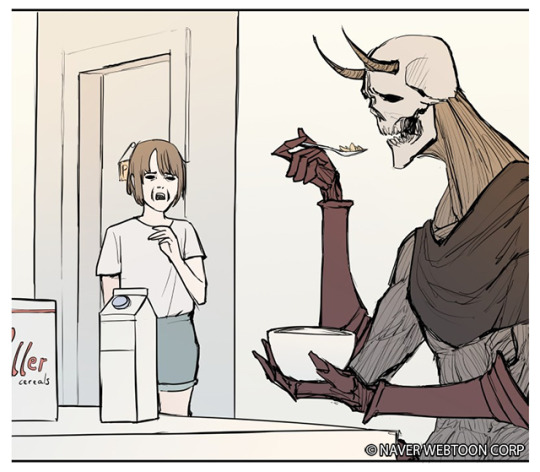
I’m a huge comedy fan, some of my favorite series of all time are comedies. So when I started reading WEBTOON Series, I really wanted to find something that would make me laugh. I didn’t have to look too hard, but perhaps no series has been as funny so consistently than Love Advice from the Great Duke of Hell. The main character, Paul, just can’t seem to get the attention of the woman he thinks he loves. So he chooses the best possible course of action: learning black magic and summoning Astaroth, one of the Great Dukes of Hell!
The comic routinely features amazing, understated visual gags and humor while building an interesting and deep storyline over the course of its run. In fact, I really didn’t expect the characters and world that Duke of Hell creates to really suck me in as much as it did, but that just lends to its overall strengths. As far as an adaptation goes, I could see this as a fantastic comedy hit that either focuses on extensive, gorgeous animation for gags like HINAMATSURI, or a muted and simplistic animation style like Skull-face Bookseller Honda-san that lets the art and jokes combine without getting too big. Either way, just thinking about voice actors for the various characters, especially Astaroth, is perhaps one of the most fun fantasies to have—after all, it would need to be someone with enough gravity to play such an amazing Duke of Hell!
Purple Hyacinth
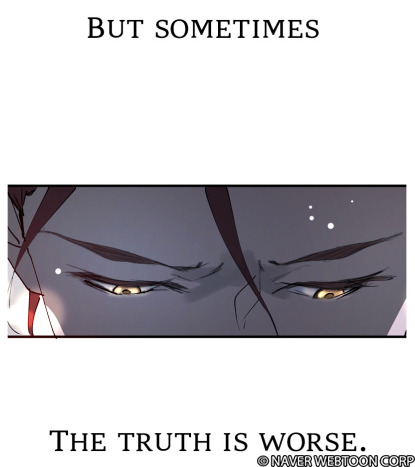
Purple Hyacinth has long been on my read list and was actually one of the series that got me started on the idea of seeing WEBTOON Series animated. Unlike other series, Purple Hyacinth routinely asks readers to turn their audio on, playing ambient and specific music throughout the series to create a multimedia experience. Of course, that isn’t the only reason for it being on this list. No, Purple Hyacinth is here because it’s a type of story that, frankly, isn’t told very often in anime lately: a gritty crime mystery thriller!
Lauren, the protagonist, has dedicated her life to avenging the death of her childhood friend and the elimination of Phantom Scythe, a terrorist organization responsible for the events that would alter her life forever. Lauren meets the assassin “Purple Hyacinth,” who just so happens to share similar goals as her. This series really just gets how to build a complex and deep mystery and the fact that you need excellent character drama to make people care about what happens next, especially when big twists and turns come! Lauren possesses the ability to detect lies, “seeing” them in red whenever people tell them. Just imagining the creative ways this could be animated alone makes me giddy at the idea of a Purple Hyacinth adaptation. But beyond that, the character drama and intrigue of the twisting mysteries here would turn this into a killer multi-season anime. I can just imagine the gleeful frustration waiting for the next season after the first one ends on a cliffhanger! If any of these series were worthy of being dubbed “binge-worthy” as an anime, I’m convinced it would be Purple Hyacinth.
Lookism
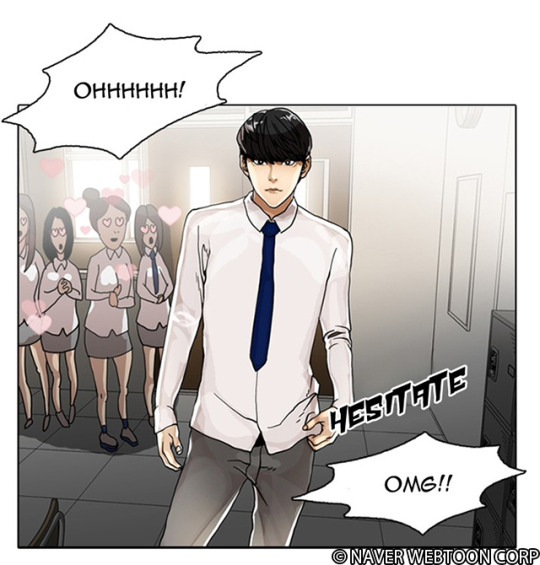
Readers of our first article on WEBTOON Series pointed out Lookism as a favorite of theirs, and with good reason. This long-running ugly-duckling story packs a lot of punch, both literally and figuratively, as the story threads of school bullying, the ugly side of society, delinquent fights, and more together into a fascinating tapestry. Daniel is poor, overweight, and bullied to such a degree that his mother scrapes all the money together that she can to send him to a new school. However, his life takes a huge change upon arrival to his new school home when he wakes up in a different body: gorgeous, tall, and super-strong! The “new” Daniel gives him the ability to pursue the life he thought he wanted, but it comes with a lot more than he bargained for!
One thing about Lookism that caught me off-guard is that it seems, at first, to be a sort of traditional ugly-duckling story where Daniel learns to love his original self while teaching those around him to be better people. But it also features heavy delinquent style fights and action. While this might sound a little dissonant, it’s fair to say that Lookism would provide tons of great material for high school delinquent action and social drama—and the fight scenes in later storylines are truly amazing to behold on the page. Lookism also features an amazing supporting cast of unique and weird characters that tend to steal the spotlight from Daniel as they get introduced, meaning there are tons of characters to fall in love with here (I’m a big Vasco and Jay fan, myself!). With a unique mix of action, comedy, and heavy drama, Lookism really has a lot to bring to the table, and when animated, would surely take advantage of its mixed genre-typing to be a big hit.
Let’s Play
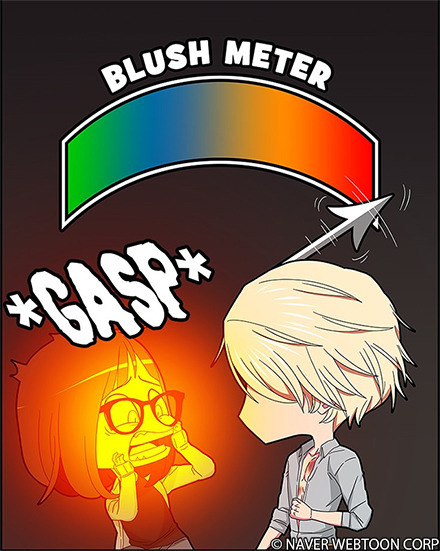
While many of the series we’ve talked about have a tinge of supernatural action or combat to them, Let’s Play is quite a bit different—just regular people here! Of course, these regular people are involved in all sorts of turmoil and romantic drama, but that’s to be expected. Let’s Play follows game dev Samara “Sam” Young, creator of the game Ruminate, and the trouble she runs into when her game’s biggest critic, Marshall Law, becomes her neighbor. Let’s Play is a fairly interesting drama due to the combination of game dev discussion—which veers into similar territory as shows like Shirobako that delve into making things—and the personal drama of the main cast.
Although it is indeed a romance, the most striking part of the series is Sam’s struggles with anxiety; her internal monologues and issues make her an incredibly relatable and fresh character. Let’s Play would make an amazing romantic comedy with a woman lead, which we really need more of these days! The video game elements of the story add that extra touch that, in all honesty, feel like they would be amazing to see animated and played with using various graphical touches, allowing animators to play with the adaptation in ways that don’t rely solely on action sequences.
unOrdinary
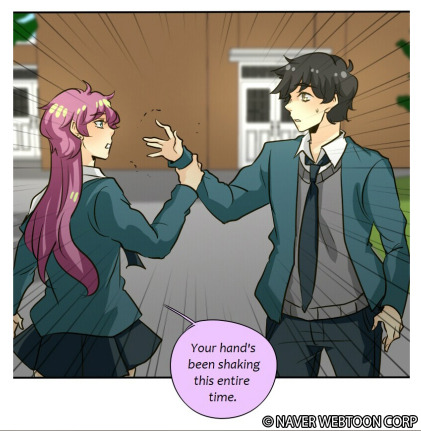
If you’re an avid WEBTOON Series reader, then it’s very likely you came to this list expecting to see this exact series, so don’t worry: we agree! UnOrdinary would be an amazing anime adaptation, likely to find a huge audience of new fans who would gobble up the series premise: a world in which some people are born with powers, or Abilities, and those who don’t find themselves treated as lessers and outcasts. John, unfortunately for him, is the latter, and as a result, he is relentlessly bullied by his classmates for his powerless nature.
In a lot of ways, unOrdinary is almost like a darker My Hero Academia, except instead of a world of superheroes and villains, it's a world of the “haves” and “have nots,” where people without abilities are treated extremely poorly. Like quite a few WEBTOON Series, social class, status, and bullying are a big part of unOrdinary, which gives it a sharp, dark edge to its narrative at times. Similarly, John is a fairly interesting protagonist and, without spoiling things, certainly makes unOrdinary, well, unordinary! Given the popularity of My Hero Academia and Tower of God, unOrdinary would probably be the best possible candidate to get the anime treatment next, likely becoming a smash hit in no time—especially once the superpowers start showing up!

With the continued success of shows like The God of High School and Tower of God, it’s only a matter of time before we see more and more WEBTOON Series adapted to anime. Of course, there’s no real plans or releases yet, but we think our list is pretty solid. No matter what, it seems like an exciting time to get into WEBTOON Series and keep an eye out for the next big hit title that might be showing up on your screens in animated form!
Which WEBTOON Series titles do you want to see animated? Do you agree with our list? Let us know what series you like and what you think in the comments!
➡️ Watch The God of High School today! ⬅️

Nicole is a frequent wordsmith for Crunchyroll. Known for punching dudes in Yakuza games on her Twitch channel while professing her love for Majima. She also has a blog, Figuratively Speaking. Follow her on Twitter: @ellyberries
Do you love writing? Do you love anime? If you have an idea for a features story, pitch it to Crunchyroll Features!
2 notes
·
View notes